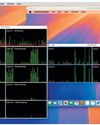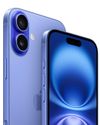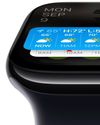
The difference between an ordinary pencil and an Apple Pencil is pretty clear. The former is for writing, drawing and shading on paper; the latter, for writing, drawing and shading on iPads. The Apple Pencil may look a lot like a normal pencil but there’s a lot of technology crammed into its compact case. Which is just as well, as it costs quite a bit more than a normal pencil does.
The first-generation Apple Pencil was launched in 2015 and is still on sale; the second generation launched in late 2018. If you’re buying one, it’s important to know that not all iPads support the first-generation or any generation. See below to check what works with what. The short version is that if your iPad has a USB-C connector, it only supports the second-generation Pencil.
Although there are important differences between the two generations of Apple Pencil, they work in the same way. The Apple Pencil contains an ultra-low-power ARM-based microcontroller with 64MB of flash memory, a 0.329Wh rechargeable lithium-ion battery, a Bluetooth module to connect to your iPad wirelessly and a three-axis accelerometer to detect motion and velocity.
The tip of the pencil is made from a hard capacitive plastic. Capacitive means it conducts electricity, just like your fingers do, which is important: if the tip wasn’t capacitive, your iPad wouldn’t be able to detect the pencil at all. It’s a softer plastic than the rest of the Apple Pencil, so it wears away over time – albeit over a very long time.
This story is from the September 2021 edition of MacFormat UK.
Start your 7-day Magzter GOLD free trial to access thousands of curated premium stories, and 9,000+ magazines and newspapers.
Already a subscriber ? Sign In
This story is from the September 2021 edition of MacFormat UK.
Start your 7-day Magzter GOLD free trial to access thousands of curated premium stories, and 9,000+ magazines and newspapers.
Already a subscriber? Sign In

Mac hardware
We help to solve your hardware hassles, from interrupted upgrades to running diagnostics

Give your iPhone a whole new look in iOS 18
Make your iPhone uniquely you

iPhone 16
Apple Intelligence-ready smartphone for the rest of us

Apple Watch Series 10
10th anniversary Watch is now slimmer with an even bigger display

AirPods 4
Apple's most affordable AirPods remain a brilliant buy

We. HEAR Pro
Room-filling sound from this stylish wireless speaker

HiDock H1
An impressive 11-port AI audio dock for conferencers

Adobe Premiere Elements 2025
Create eye-catching videos for sharing on social media

Photoshop 2024
Your imagination is the limit with this AI-powered pixel creator

Wispr Flow
Bring the power of AI dictation to DMs, documents and Discord chats